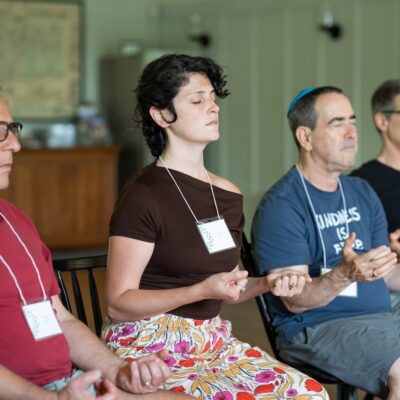A Bright Future for Jewish Education and Technology
 By Daniel Septimus
By Daniel Septimus
[This post is part of a series on the new report, The Future of Jewish Learning is Here: How Digital Media Are Reshaping Jewish Education, by Stanford University’s Ari Y. Kelman. The report, commissioned by the Jim Joseph Foundation, was released in conjunction with the recent Jewish Funders Network conference. The series shares multiple perspectives on the findings and questions raised in The Future of Jewish Learning.]
Leading a digital, Jewish nonprofit is a complicated endeavor that evolves every year. This year’s report from the Jim Joseph Foundation, “The Future of Jewish Learning is Here: How Digital Media Are Reshaping Jewish Education,” captures many of the challenges that we at Sefaria confront daily – and even minute-to-minute.
I have been building online Jewish learning experiences for two decades – at the helm of MyJewishLearning and now at Sefaria. For the vast majority of that time, our community at large has been skeptical of online Jewish experiences. Over the years, I’ve been frequently confronted with a version of this question: “So people spend 20 minutes reading Torah or articles about Judaism on your website? And then what?”
The implication, of course, has been that time spent learning on Jewish websites was, at best, a means to another end. As a cheerleader for the digital revolution, and as a Jew brought up to value learning Torah for its own sake, I was baffled by the question. But the fact that a version of it was asked so often had me thinking that I was the weird one. For years, I’d gotten used to trotting out statistics about the percentage of people who use the Internet for important life decisions to try and persuade people that the Internet was more than just a fad.
In contrast, this new report from the Jim Joseph Foundation makes it clear that a new day has dawned. While many previous investigations into the Jewish Internet have presented it as a provisional phenomenon, this study accepts as its starting point that digital experiences shape our lives. It recognizes the essential truth that Jewish thought and education are alive and well online – whether on Facebook, on a podcast, on a site like Sefaria, or elsewhere.
This newly-realized admission that learning can happen everywhere is critical. Now, Jewish learning can be freed from the confines of the traditional, teacher-led classroom. And this has many potential benefits. Progressive education has always considered learning through exploration a better path to true education. By interconnecting the Jewish library, Sefaria allows different learners to click their way down rabbit holes that take the shape of their specific exploratory instincts.
In other words, digital learning is not always worse than in-real-life (IRL) learning – and it can sometimes be better. The amount of information online (and its varying degrees of reliability) may provide some challenges, but if we only focus on the explosion of fake news, we’re missing the big picture. It’s easier to learn about new things than ever before, and this information explosion is revolutionary for education, and has already been revolutionary for Jewish learning.
Indeed, this new report offers glimpses of a new narrative about early 21st century American Jews. While declining institutional membership has caused widespread panic, Jewish life is thriving online. Your local synagogue may have seen a reduction from 500 to 200 families since 2013, but more than 3 million people have studied Jewish texts on Sefaria since then.
Perhaps the most resonant, and easy-to-ignore finding of this report is the insight that online Jewish learning has created deeper awareness of the Jewish calendar. This is significant as our calendar provides a natural rhythm to access Jewish media, and it also appeals to people’s deepest emotional connections to Judaism. Even I – a yeshiva-educated Jewish nonprofit CEO – sometimes only remember a minor holiday after receiving an email from Sefaria. Being in tune with the Jewish calendar can provide a deep connection to Jewish life, and digital media makes calendar awareness possible in ways that were not possible 25 years ago.
Ultimately, I appreciate The Future of Jewish Learning is Here for its understanding that the digital Jewish experience is not a threat to the real-life Jewish experience – they can and should operate in tandem, each enriching the other. Digital experiences should be appreciated for their scalability and for enabling things that are impossible in real-life. They do not replace the need for local community, of course. Instead they help many people find the right Jewish community – locally and online – that is the best fit for them.
Daniel Septimus is the CEO of Sefaria.The complete report, The Future of Jewish Learning is Here: How Digital Media Are Reshaping Jewish Education, is available for download here.

 Add EJP on Google
Add EJP on Google










